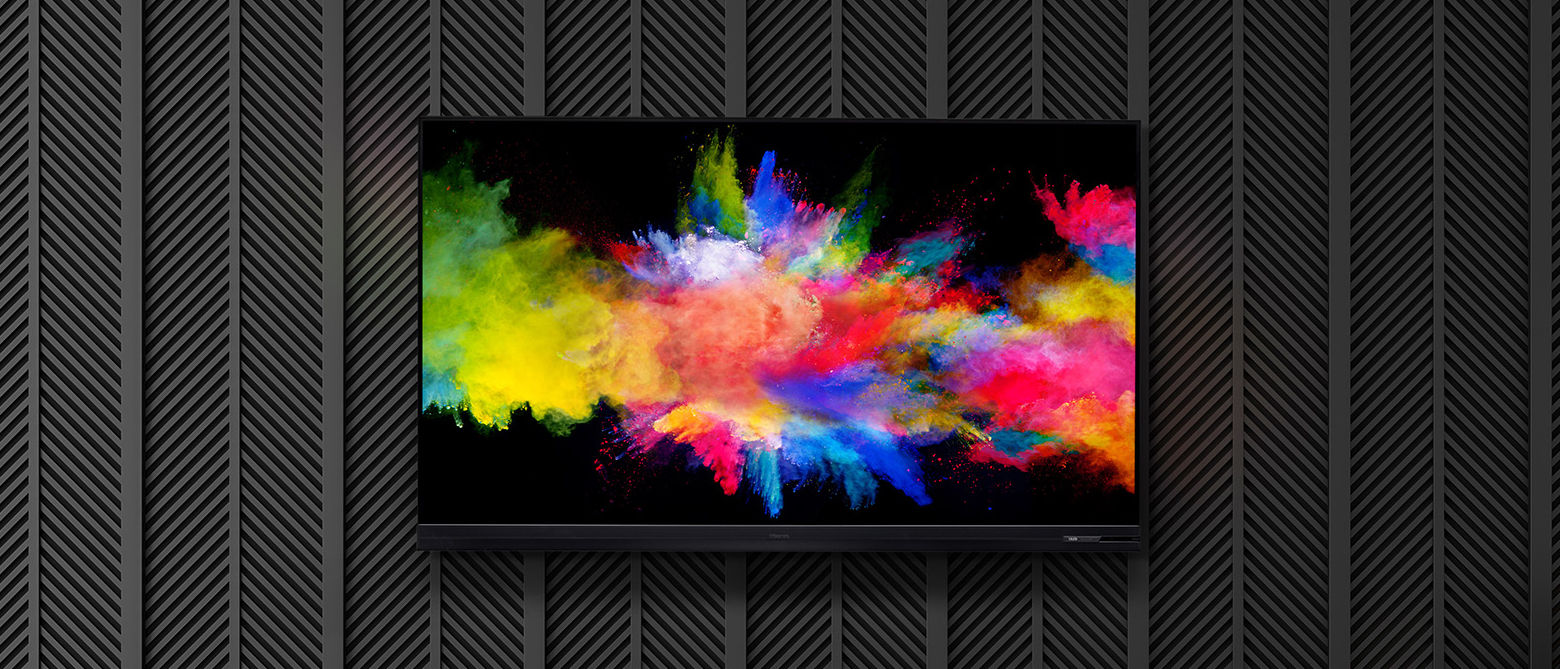TechRadar Verdict
Hisense's new Dual Cell technology offers the best contrast levels of any LED/LCD television we've seen to date, achieving blacks approaching that of an OLED without sacrificing brightness. That said, the 65SX suffers somewhat from image processing issues.
Pros
- +
Terrific black levels
- +
Dolby Vision and Atmos support
- +
Subwoofer adds exceptional bass
- +
Impressive brightness
Cons
- -
Occasional image scrambling
- -
VIDAA OS still lacks key apps
- -
No HDMI 2.1 support
Why you can trust TechRadar
UPDATE: While it wasn't provided during our review period, it's now been confirmed that the Hisense 65SX Dual Cell TV is in fact being sold with a microphone-enabled remote for full Amazon Alexa functionality.
An Australian Hisense representative has reached out to state that "the remote offers full Alexa functionality via a microphone in the top centre of the remote, therefore users can use voice control directly through the TV (either via RemoteNOW or the included Bluetooth Voice Remote)."
An updated version of our original review continues below.
One-minute review
Hisense is banking pretty hard on its new Dual Cell TV technology, which employs traditional local dimming along with two precision-bonded LCD layers (one cell for colour and a grayscale cell for luminance) in order to achieve previously unobtainable black levels on a non-OLED display.
In a nutshell, that means that Hisense's 65SX is able to reach black levels that are incredibly close to that of an OLED television, only without sacrificing brightness and color.
In fact, the Chinese manufacturer is so confident in the technology that it is no longer producing OLED televisions, opting instead to make the Hisense 65SX Dual Cell TV its new flagship.
The 65SX also boasts excellent sound for a television, with front-facing speakers that offer Dolby Atmos audio, and an included wireless subwoofer that can be placed anywhere in your room or connected to the TV's stand.
That all sounds pretty good, right? Well, yes and no. While the 65SX excels in a number of very important areas, it also drops the ball occasionally in others.
We noticed instances of image scrambling and artifacting during our review period, along with 'built-in' Alexa functionality that still required an additional device in our review session.
Hisense has since reached out to confirm that while it was not available during our testing period, the 65SX is being sold with a fully-functional remote with microphone for Alexa voice commands.
Additionally, the updated OS is yet to offer apps like Disney Plus and Apple TV Plus.
That said, while the 65SX has some negatives, they are outweighed by its positives, meaning there's still a lot to love about Hisense's flagship Dual Cell TV.
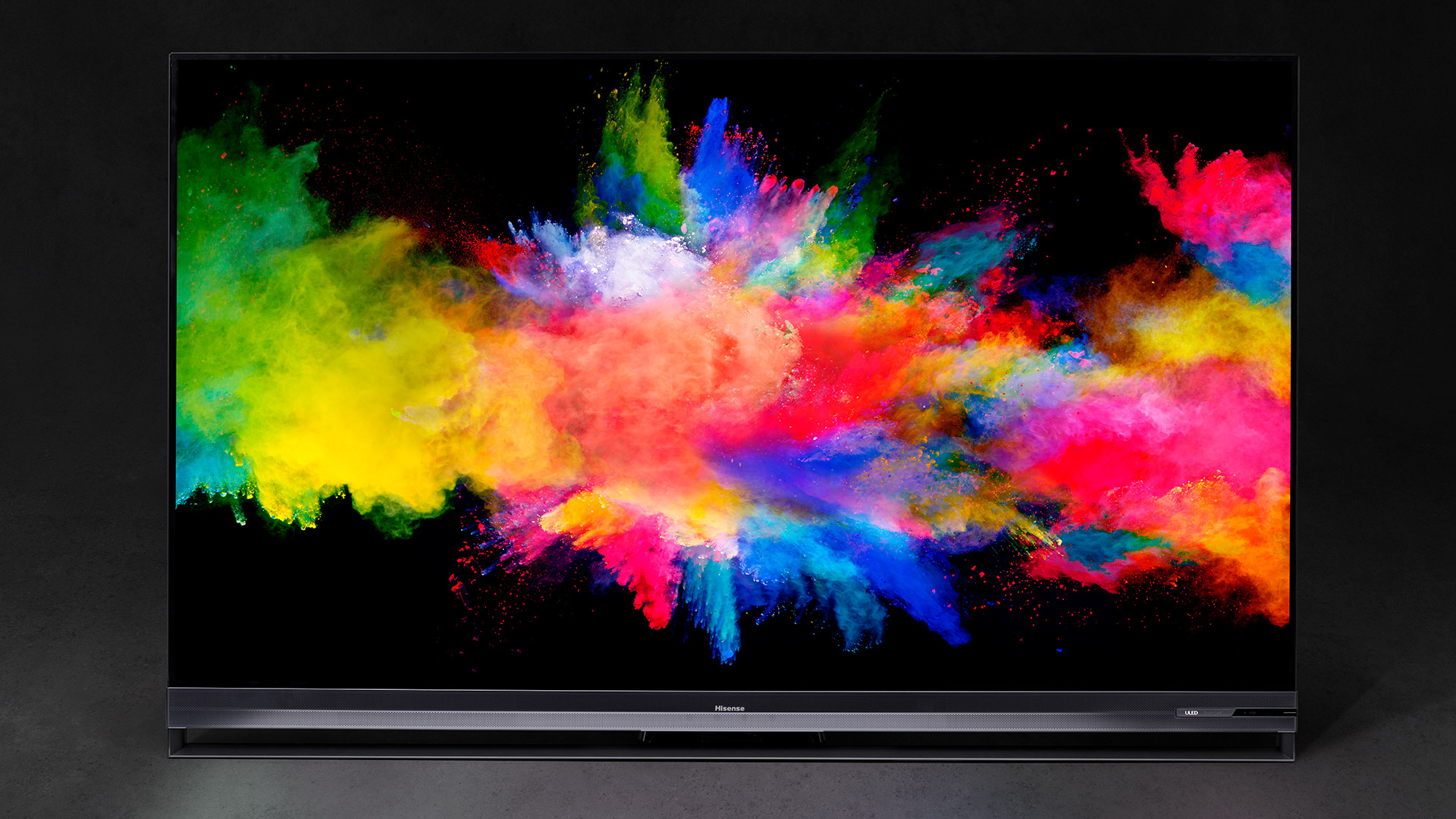
Price and availability
- Available only in 65-inch model
- Launching in Australia at AU$3,499 (around $2,500 / £1,900)
- Available in Australia from mid-September, US and UK expected soon after
The Hisense 65SX will only be available in a 65-inch model, which has received an RRP of AU$3,499 Down Under. We're yet to confirm pricing on other regions but that roughly translates to $2,500 / £1,900 in the US and UK.
From an Australian perspective, that's a decent price for a flagship television of this size, and certainly cheaper than any 2020 OLED flagship from competing manufactures.
However, it is still an LED/LCD television, and you can find excellent QLED sets from Samsung at around this price point – or maybe even a little less.
As is the case with most Hisense televisions, the 65SX is receiving an Australian release ahead of other territories, and is due to arrive in mid-September. The UK and US can expect to get the TV later this year.
Screen Sizes: 65-inches | Tuner: Freeview Plus | 4K: Yes | HDR10: Yes | HLG: Yes | Dolby Vision/Atmos: Yes/Yes | Panel technology: LCD | Smart TV: VIDAA 4 | Curved: No | Dimensions: 1450 x 869 x 53mm (without stand) | Weight: 38.5kg (without stand) | 3D: No | Inputs: 4xHDMI 2.0 (1xARC), 2xUSB, 1xRF, ethernet | Outputs: 1x optical
Design
- Sleek and attractive design
- Clever use of subwoofer as a stand
- Lacks HDMI 2.1 support
Right off the bat, Hisense's 65SX impresses in terms of its industrial design. It's sleek with minimal bezels and a surprisingly thin frame, especially when you take into consideration the TV's backlighting system and the two precision-bonded LCD layers we mentioned earlier.
Of course, the 65SX gets thicker towards the bottom third of the telly, but you won't really get a sense of that unless you're looking at it from behind.
In what will likely be a 'love it or hate it' design element, the 65SX has a visible speaker grill along the bottom edge of the display, which appears somewhat like a thin soundbar that's attached to the TV.
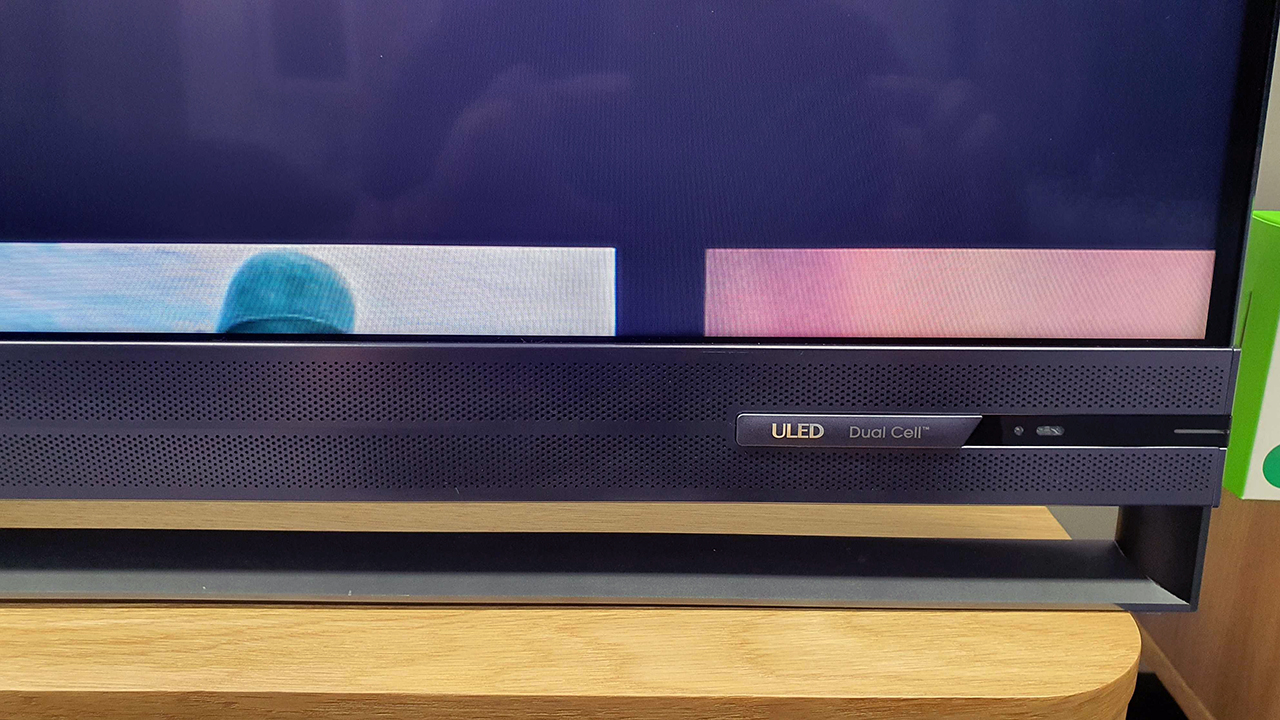
In terms of sound, the 65SX is capable of dimensional audio thanks to its speakers (of which there are four tweeters and two speakers for the midrange). While the TV does offer built-in Dolby Atmos support, it's worth noting that there are no up-firing speakers, so it won't sound like things are flying over your head.
Cleverly, the included wireless subwoofer can be mounted to the back of the TV, acting as a stand in the process. When used in this way, the subwoofer can be powered by the television itself, rather than needing its own separate power source.
That said, due to the size of the sub, you'll need a space with a decent amount of depth (at least 345mm) if you're planning on using it as a stand. Additionally, there are pegs on the back of the 65SX for those who'd prefer to wall-mount it.
As for the Hisense's 65SX connectivity, you'll find four HDMI ports (HDCP 2.2) with HDMI 1 offering ARC (audio return channel) support – this allows you to run all your HDMI sources out to a soundbar or receiver with a single HDMI cable. You also get USB ports, an RF antenna input, an optical output and an ethernet port.
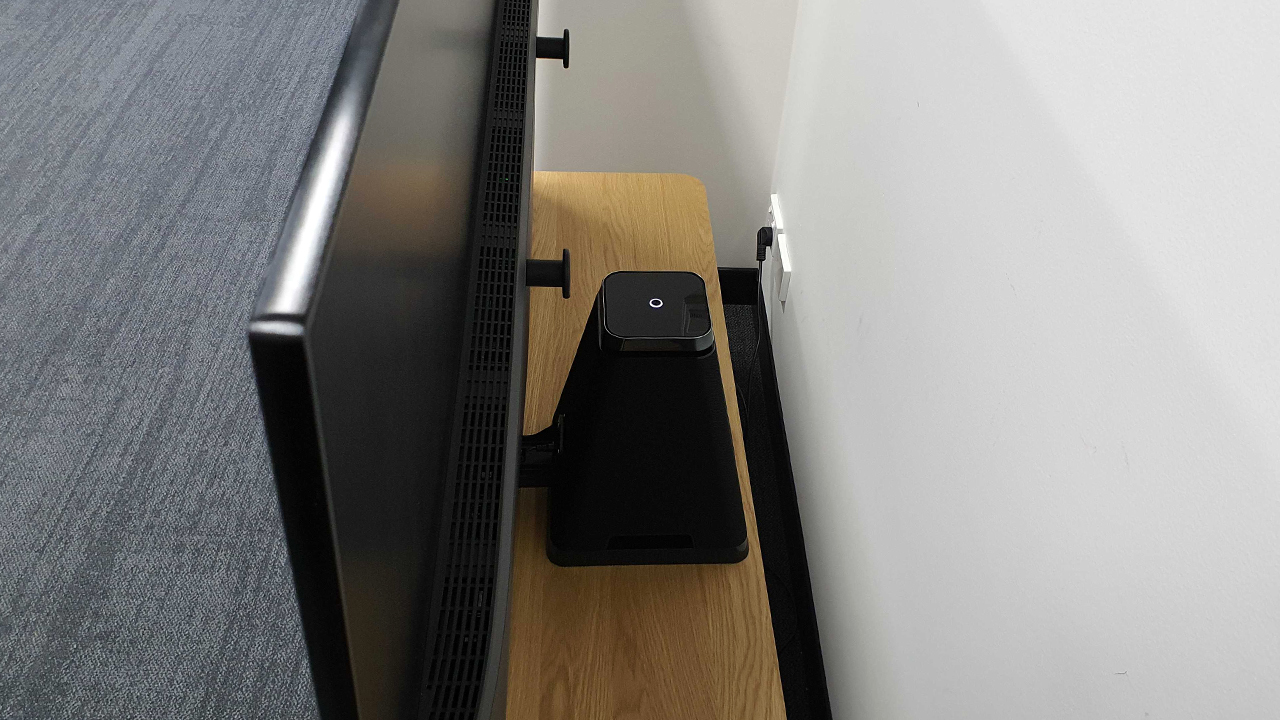
It's also worth noting that despite being a flagship telly in 2020, it doesn't offer HDMI 2.1, meaning you won't be able to play games at 4K/120fps – a shame, given that Sony and Microsoft's next-gen consoles will both support this and are right around the corner.
During our review period, we were provided with two remotes: a standard international remote, along with a smaller remote for the Aussie market.
The main difference is that the latter lacks some function buttons but includes extra buttons to launch local services Stan and ABC iview. Hiense has since assured us that the TV will not come with these remotes, but a dedicated remote with microphone for voice commands.
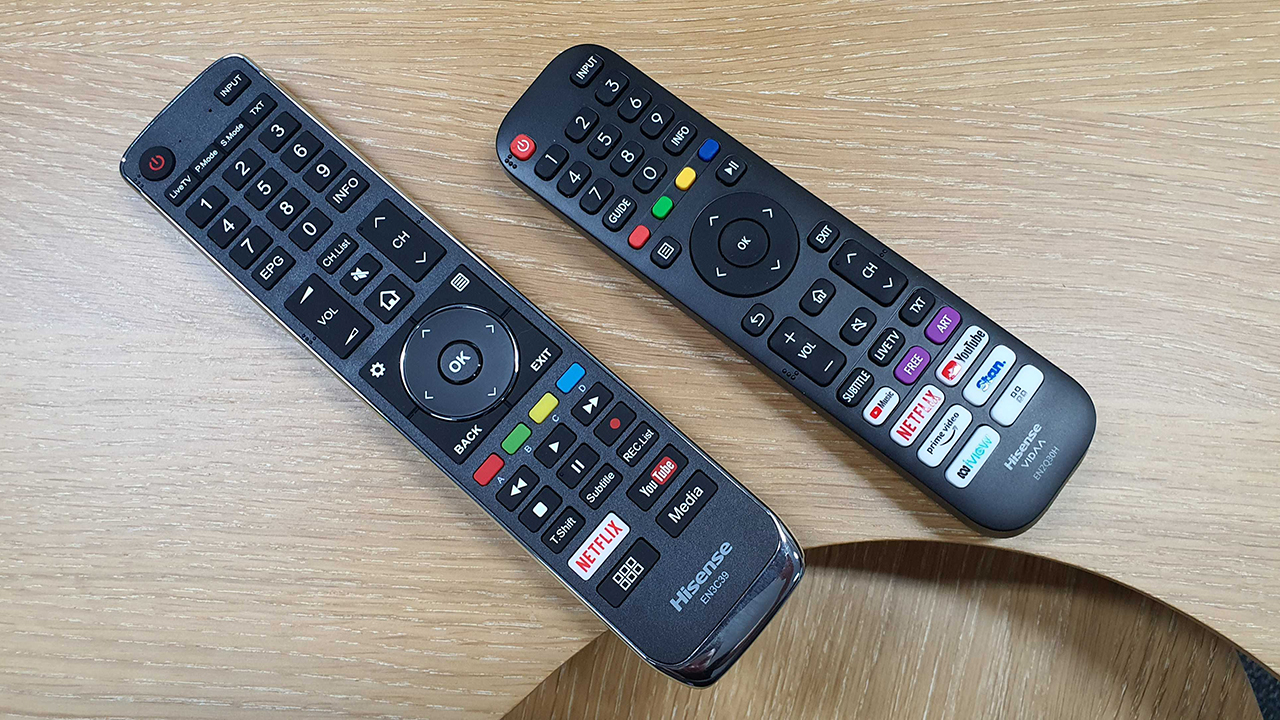
Smart TV (VIDAA 4)
- Refreshed user interface
- Half-baked Alexa integration
- Still lacks key apps
Witnessed side-by-side with an older version of the VIDAA OS, Hisense's new VIDAA 4 smart TV platform feels remarkably fresh and modern.
Colorful, snappy and easy to navigate, the Hisense 65SX's home screen should please those who are after quick access of content from their various favorite apps.
Sections for each app are arranged horizontally and in rows, allowing you to see recently added TV shows and movies from services like Netflix and Tubi. Depending on which region you are in, you may find apps for local streaming services – for example, in Australia, you'll also find apps for ABC iview, SBS On Demand and more.
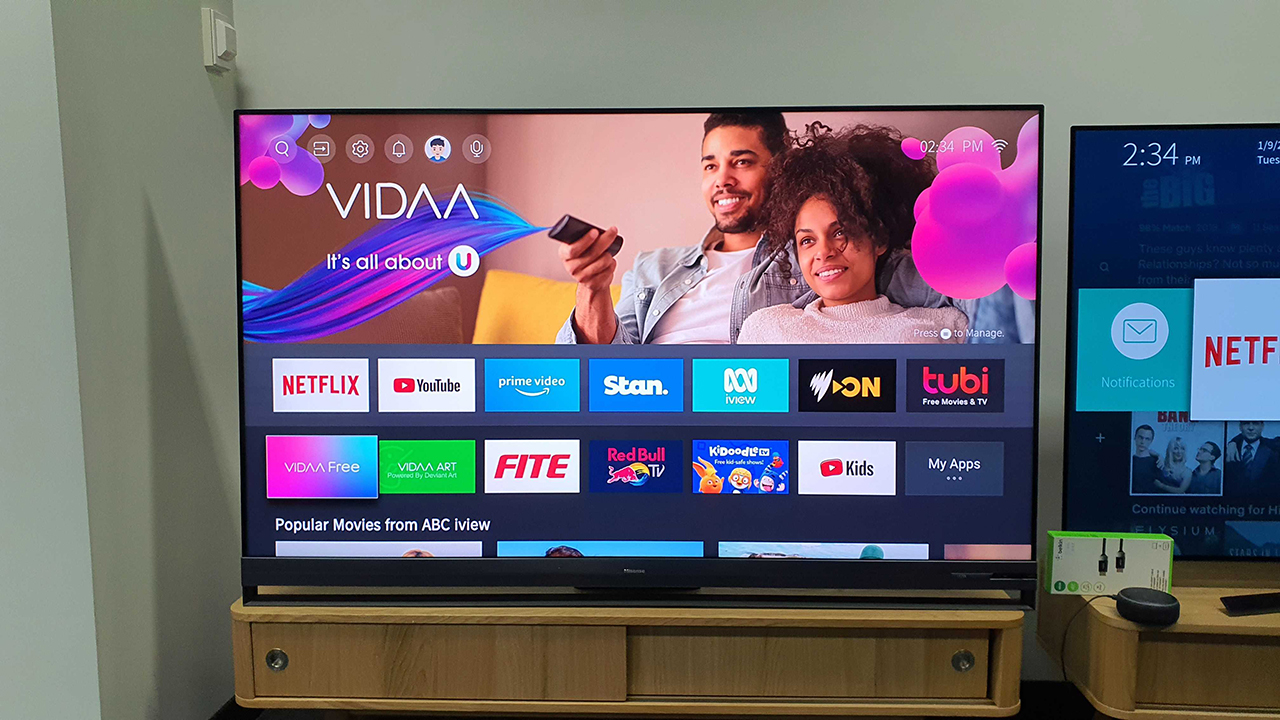
Additionally, VIDAA 4 offers a number of pre-installed apps, such as VIDAA Free, a streaming service which pulls free videos from a number of sources (though nothing particularly exciting) and VIDAA Art, a place to view content uploaded by the DeviantArt community.
Overall, VIDAA 4's app selection can be described best as a mixed bag. Many of the major players are present, such as YouTube, Netflix and Prime Video (Stan and SBS On Demand are also available Down Under), but there's a possibility that common catch-up apps might be missing (like 9Now and 7Plus are curiously absent in Australia).
On top of this, you can't install Disney Plus or the Apple TV app on the 65SX (at least not officially) right now, so you'll have to use an additional streaming device, such as an Apple TV 4K, in order to watch TV shows like The Mandalorian or Defending Jacob. We've been told that Hisense is looking into adding Disney Plus support in the future, though no time-frame has been given.
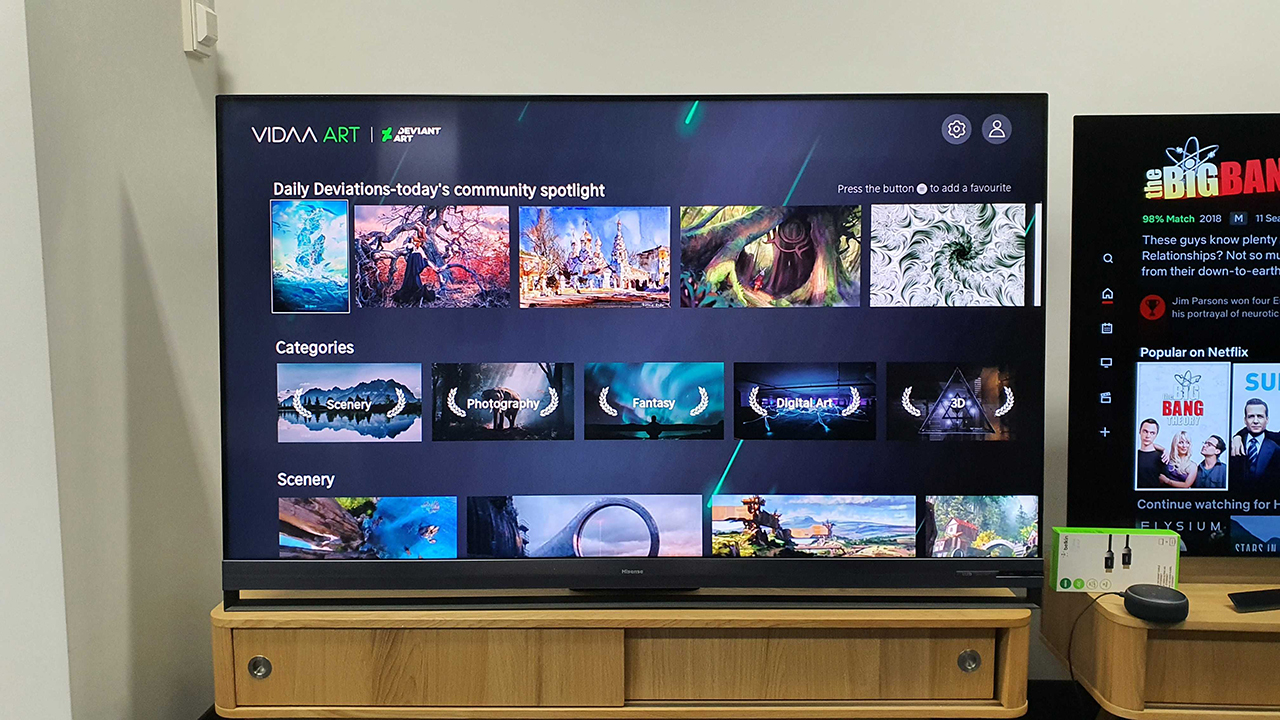
For added smarts, Hisense's 65SX offers built-in Amazon Alexa functionality, meaning you can ask your telly a question and have Alexa answer it for you. However, for the purposes of our review, we had to use a separate Alexa device to use that functionality.
During our review period, we were provided with two remotes, neither of which had a microphone (though we're assured TV does come with a microphone enabled remote at retail).
Of course, there is another option: Hisense's RemoteNOW smartphone app, which is available for iOS and Android, can be used to control the 65SX and that does have an on-screen microphone button for voice commands. That said, if you have to whip out your phone and open an app to ask Alexa a question, you might as well cut out the middleman and use your phone's own voice assistant.
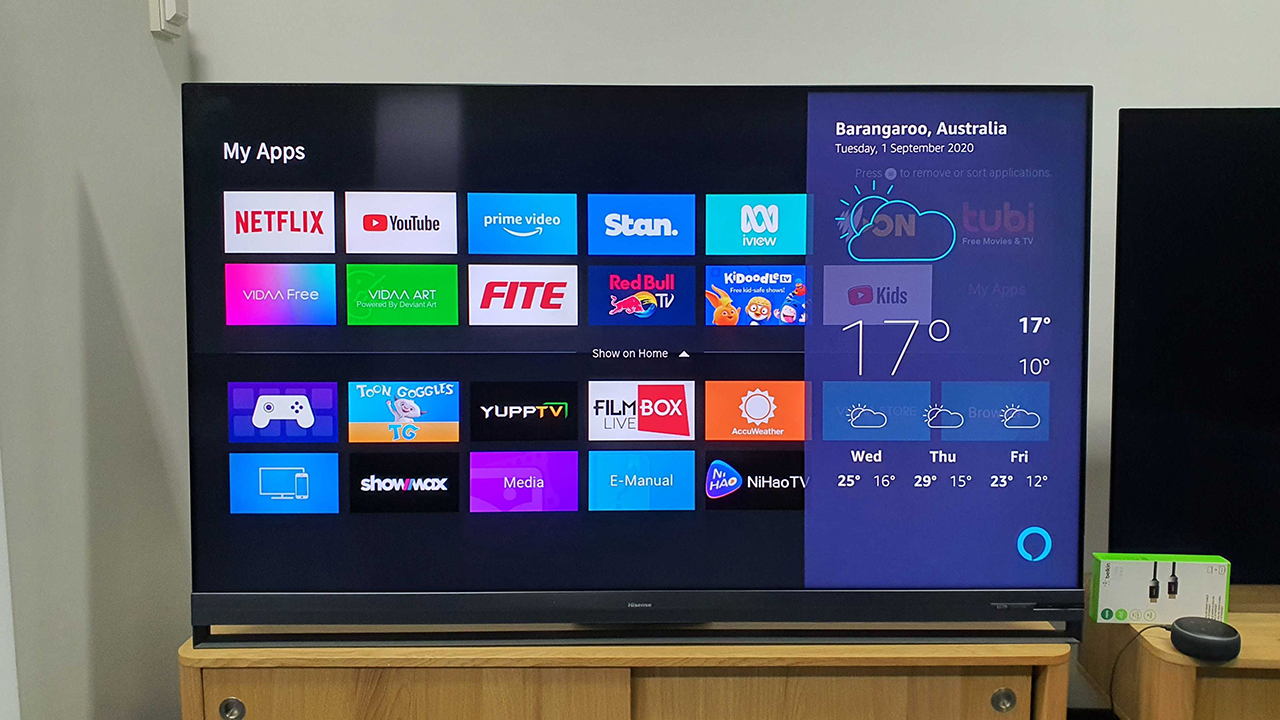
Picture quality
- Excellent color and brightness
- Impressive black levels
- Occasional image scrambling
In terms of color and brightness, Hisense's 65SX television takes a huge leap forward over its previous OLED models, offering Dolby Vision and HLG support for vibrant images that really pop.
We know this firsthand, as we were able to directly compare Hisense's new Dual Cell TV to one of its own OLED models from a couple of years ago. Judged side-by-side, the 65SX offered a much brighter and warmer image than the OLED at the exact same picture settings.
Given that Dual Cell technology is compared often to OLED, we decided to launch the TV's YouTube app and run some 4K OLED test videos. We were immediately impressed by the 65SX's ability to reach black levels nearing that of an OLED device.
While there was some minor light bleeding around objects moving across a pitch black background, it wasn't enough to distract, giving us a very pleasing image with incredible contrast.
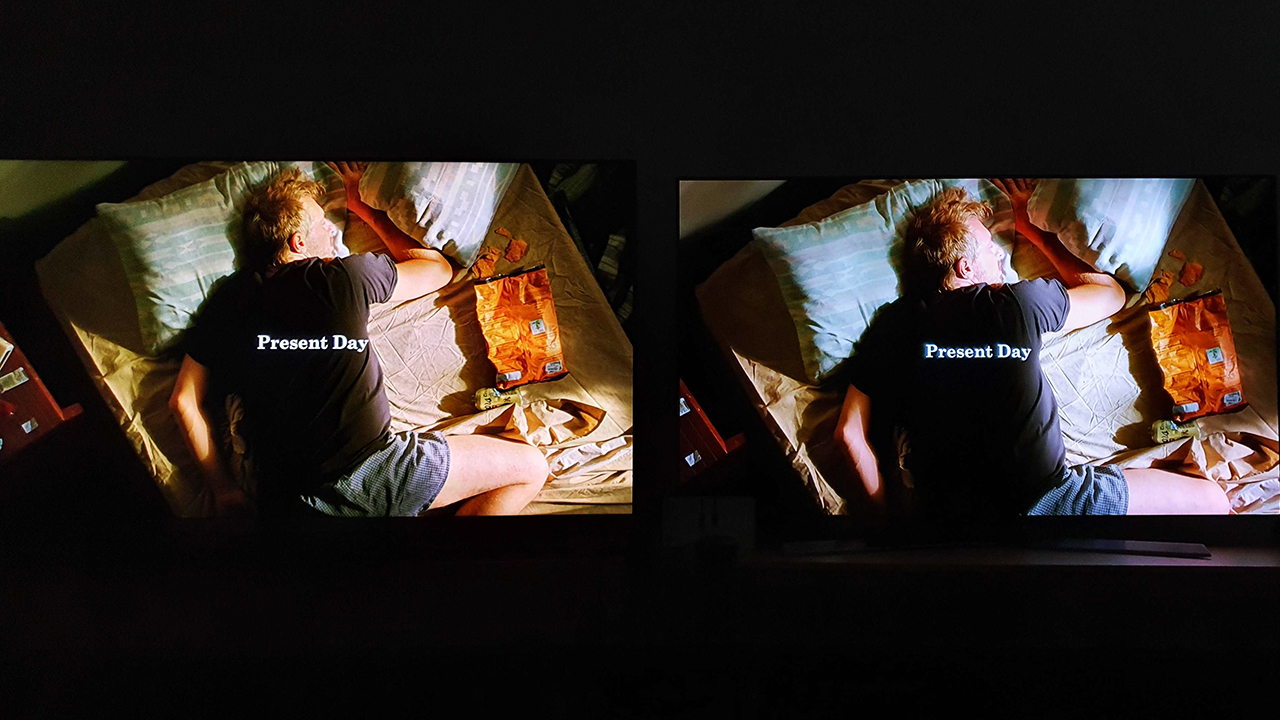
As mentioned earlier, this effect is achieved via the combination of a full array local dimming system (consisting of hundreds of individual lights spread out over the entire back panel) along with an additional 1080p monochrome display that sits behind the primary 4K color display.
To put it in as simple terms as possible, the full array system lights up a black-and-white display that's used solely for shading, which then lights the main color screen in front of it. This leads to backlighting with far more accuracy, turning a couple hundred backlights into the equivalent of over two million dimming zones.
It's a clever alternative to expensive OLED technology, and while we can't really fault the 65SX from a contrast standpoint, we did notice some issues when it came to the Hisense 65SX's image processing.
First noticed while streaming the opening episode of Netflix's Cobra Kai series in 4K, we experienced multiple instances of image scrambling around fast moving objects on-screen.
One scene saw the show's protagonist wave his hand around in front of his face, only for it to look like he was momentarily disappearing into a retro video game. Later in the same episode, the scrambling effect happened again during an instance of mild shaky-cam inside a car at night.
It's unknown whether Netflix's streaming bit rate was the main culprit here, though It's worth noting that the scene was simultaneously playing on both the new Dual Cell TV and the older OLED next to it, and the same problem did not occur on the OLED.
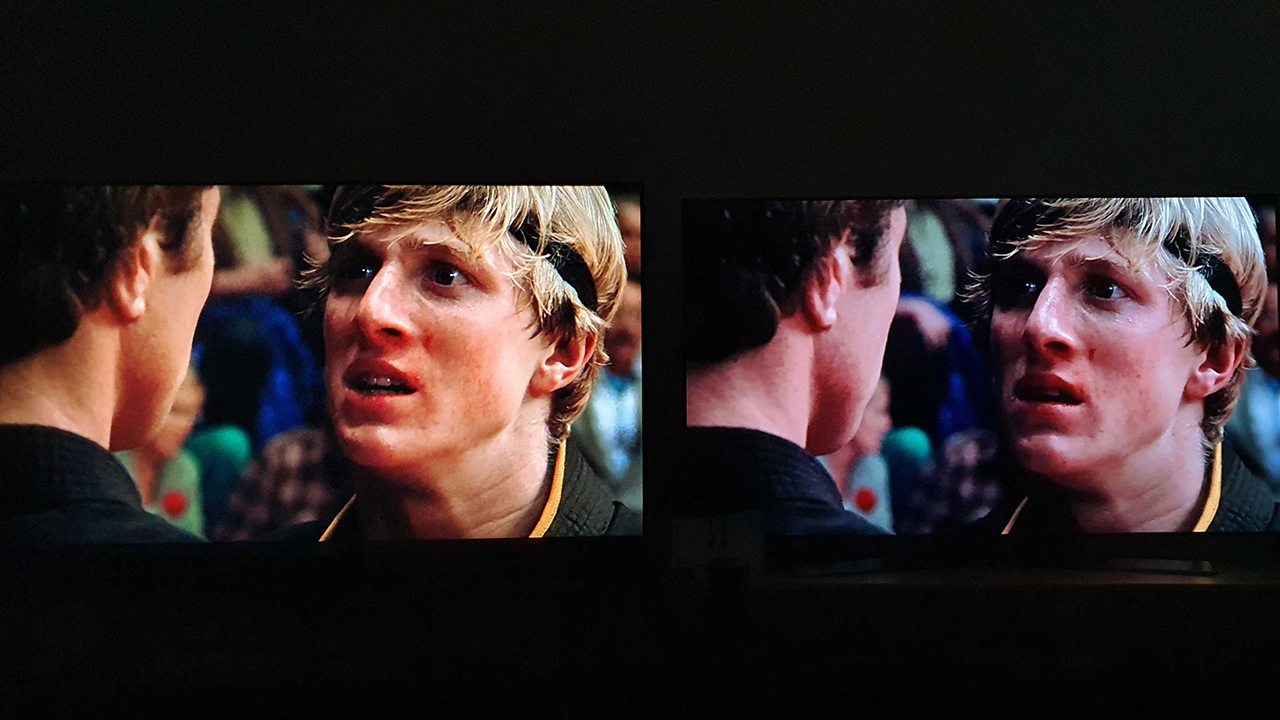
In an effort to push the TV even further, we decided to boot up Michael Bay's hyperactive Netflix Original film 6 Underground, which features frantic movement, light strobing and rapid-fire editing during its action scenes – so much so, there's a warning for photosensitive viewers actually prefacing the film.
Surprisingly, the 65SX handled itself fairly well with 6 Underground – there were a couple of noticeable instances of scrambling, though not as many as we'd expected given the comparatively mild filming style of Cobra Kai.
Of course, we regrettably noticed another issue during the film's relatively calm opening scene, in which a Redbull stunt plane performs aerial tricks over canyons and a large body of water.
Identical to an issue we had with Hisense's Series 7 ULED back in 2016, the edges of the object in focus (in this instance, a plane) were surrounded by blocks of pixels against a fast moving background. Most people are unlikely to notice the artifacting, but once you do, it's hard not to see it.
Apart from these issues, the Hisense 65SX is very pleasant to watch, with great colours and good brightness levels. Overall picture detail is excellent, with the TV's AI upscaling technology making even standard definition content look clean and sharp.
As for viewing angles, Hisense's Dual Cell TV handles itself about as well as any top-tier LCD television on the market – you will notice some loss of contrast and color saturation when viewed from a harsh enough angle (around 45 degrees), but nothing that would be considered a deal breaker.
And, while we didn't get a chance to test live sport on the Hisense 65SX, the telly does offer 200Hz smooth motion functionality.
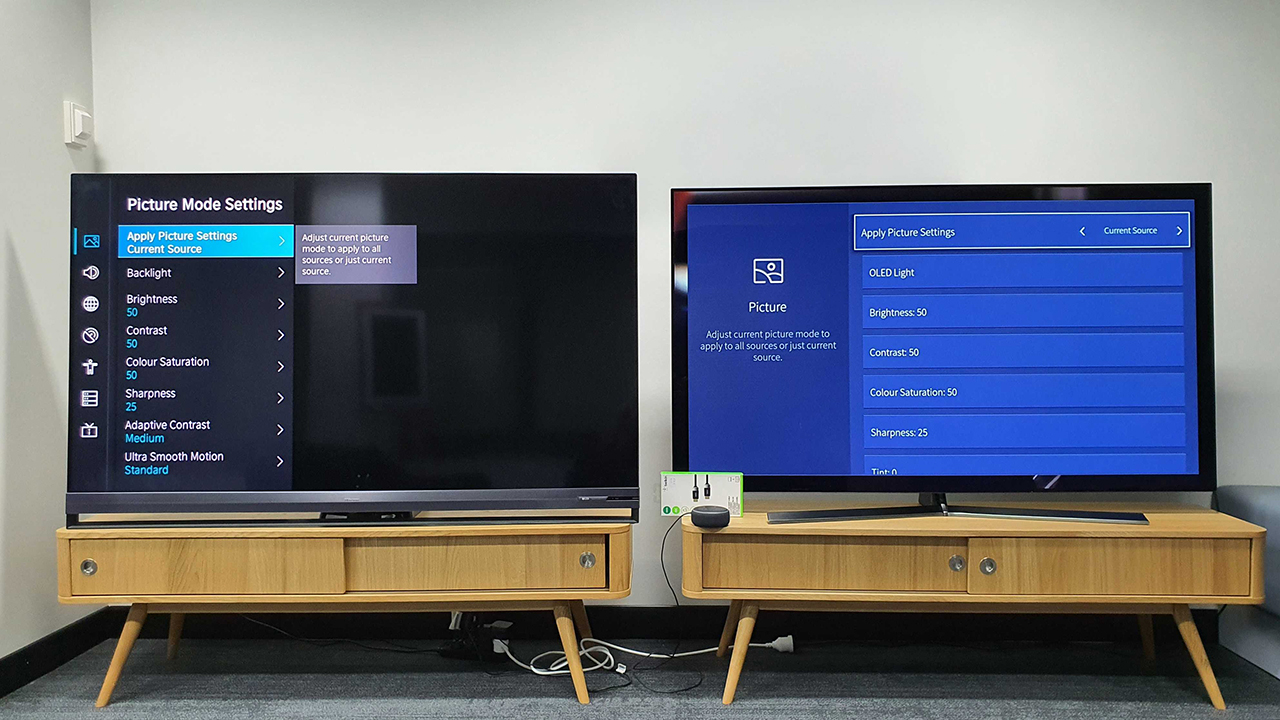
Audio performance
- Dolby Atmos audio support
- Terrific bass thanks to included subwoofer
- No up-firing speakers
When it comes to built-in audio, the Hisense 65SX is leagues ahead of the competition. This is due in large part to the inclusion of a wireless 4.1-inch subwoofer, which delivers exceptional depth on the low-end.
While most TVs (even high end ones) offer tinny built-in audio that can best be described as 'adequate', the 65SX delivers fuller, bassier sound that may leave some questioning the need for an additional soundbar.
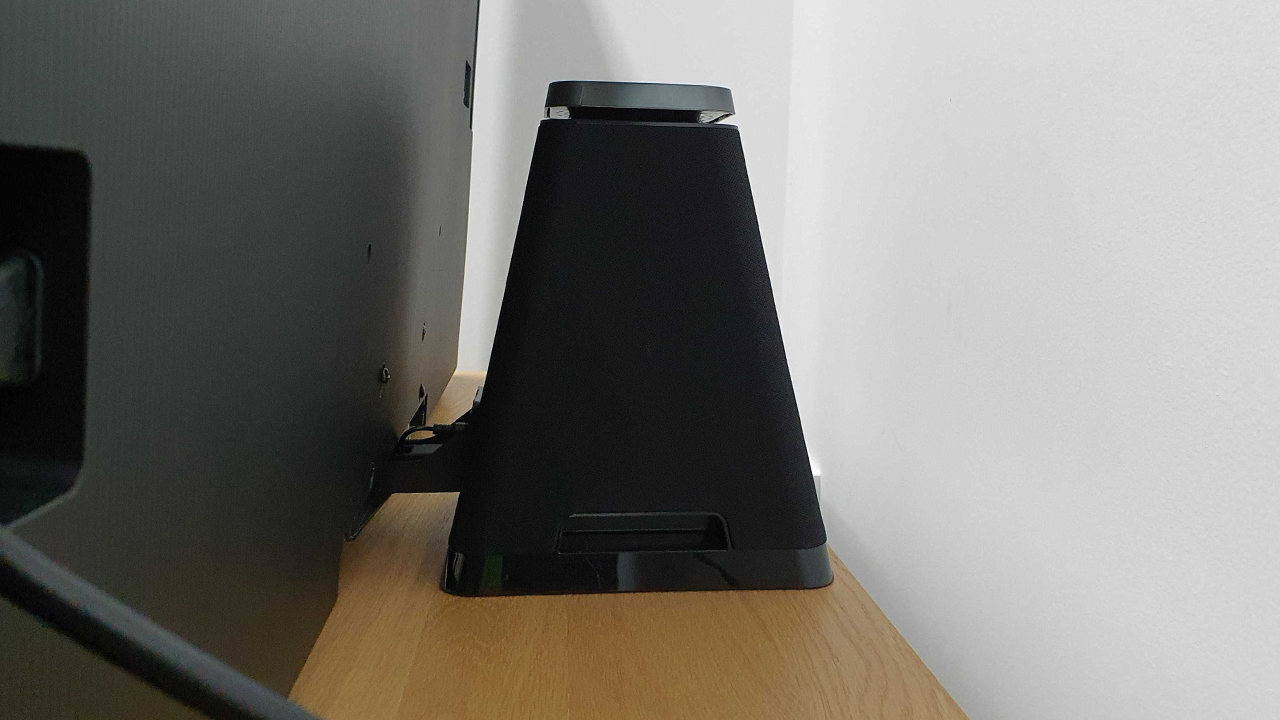
As discussed earlier, the 65SX offers four tweeters and two speakers for the midrange in its built-in package, and is capable of Dolby Atmos audio.
Because there are no up-firing speakers, you admittedly won't get the full Dolby Atmos experience of things flying over your head. That said, Hisense's Dual Cell TV does offer a decent amount of dimensionality for those sitting in front of it – even without additional rear speakers.
Still, the real showstopper here is the wireless subwoofer, which can be connected to the rear of the TV, or placed anywhere in the room (though you will need a power source for the latter option).
In our tests, we were able to set the volume quite loud (around two-thirds of the way to full capacity) before noticing any bass distortion, which is quite impressive.
Should I buy the Hisense 65SX?
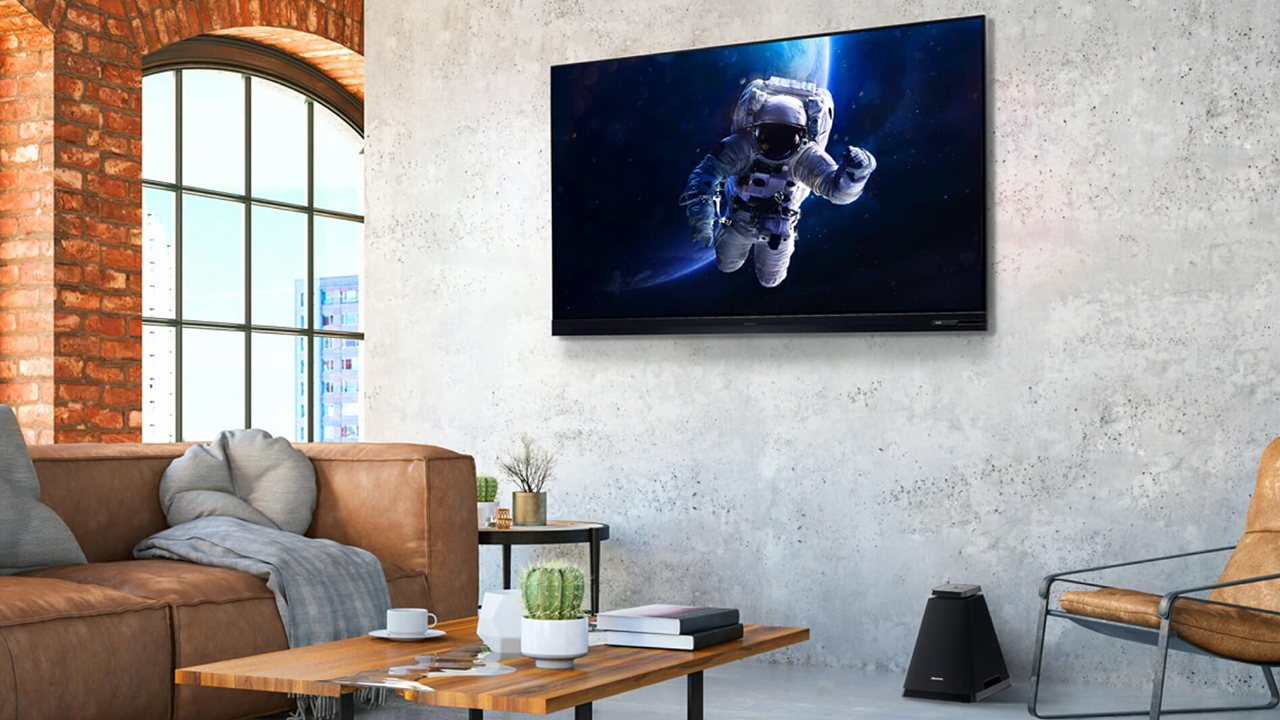
Buy it if...
You want an affordable alternative to OLED technology
Thanks to its impressive Dual Cell technology, the Hisense 65SX is able to offer near-OLED black levels while retaining the brightness and color vibrance of a traditional LCD television. Additionally, the 65SX is more affordable than any flagship OLED TV on the market.
You want to avoid buying an additional soundbar
Hisense's 65SX offers excellent built-in sound thanks to its included wireless subwoofer and support for Dolby Atmos audio. If you want good sound without having to buy an additional soundbar, the Hisense 65SX is a great option.
You want exceptional brightness and color
Because the Hisense's Dual Cell TV is still based on LCD technology, the 65SX is able to offer far brighter images than an OLED television, and additional color vibrance.
Don't buy it if...
You're bothered by occasional image scrambling
The Hisense 65SX offers excellent picture quality, though it is occasionally hampered by image scrambling in fast moving scenes. It's not a constant problem by any means, but it will bother those who are after viewing perfection.
You want a future-proofed TV for gaming
The lack of HDMI 2.1 support means you won't be able to take advantage of the 4K/120fps capability that'll be offered by both the Xbox Series X and PlayStation 5 consoles.
You want complete app support
As great as the updated VIDAA 4 operating system is, it still lacks access to key apps, such as Disney Plus and some local options (like 9Now and 7Plus in Australia) among others, meaning you'll need an additional streaming device.

Stephen primarily covers phones and entertainment for TechRadar's Australian team, and has written professionally across the categories of tech, film, television and gaming in both print and online for over a decade. He's obsessed with smartphones, televisions, consoles and gaming PCs, and has a deep-seated desire to consume all forms of media at the highest quality possible.
He's also likely to talk a person’s ear off at the mere mention of Android, cats, retro sneaker releases, travelling and physical media, such as vinyl and boutique Blu-ray releases. Right now, he's most excited about QD-OLED technology, The Batman and Hellblade 2: Senua's Saga.
